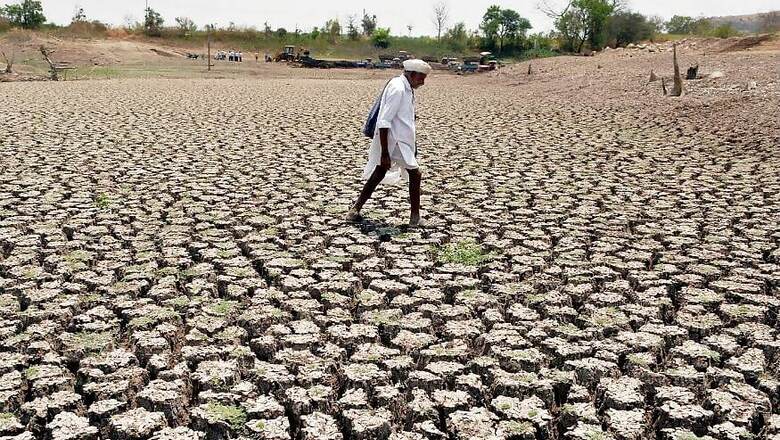
views
Lalitpur: Facing acute water shortage throughout the year owing to government apathy, voters of five villages in the Jhansi-Lalitpur constituency of Uttar Pradesh have threatened to boycott elections on April 29.
Villagers complain that the administration has failed to make use of various water sources and dams present in the region, forcing five villages in this district to face the worst water crisis every year.
They say the situation has also triggered migration of families to nearby urban centres.
“The villagers of Lalaun, Gulenda, Chakra, Kasa and Rajpur in Jhansi-Lalitpur constituency have decided to boycott the elections on April 29,” said Mahendra Singh, a villager from Gulenda.
These five villages have about 5,000 voters, he says.
Singh says villagers are often forced to remain awake throughout the night, awaiting their turn to use hand pumps to fetch a bucket of water.
Lalitpur district comes under the Jhansi-Lalitpur seat which goes to polls on April 29. The area under the Bundelkhand region is prone to draughts and poor groundwater level as it has a predominant granite base, which does not allow recharging of groundwater.
The Bundelkhand region in Uttar Pradesh has four parliamentary seats, including Jhansi-Lalitpur, and 19 assembly constituencies. All these seats are currently held by the ruling BJP.
Call it irony, Lalitpur district has 13 dams to harness seven rivers which flow through the region.
“We have decided not to vote in the elections. We have been seeking a solution to our water issues, but the district administration has been passing the buck,” Singh says.
He says a solution is not difficult as there is a rivulet which catches seepage water from Rajghat canal, making it brimming with water throughout the year.
“We are seeking a small lift canal (where water is pumped from lower area to canal on a higher land) from that rivulet to be brought here. It will help recharge groundwater and also solve our irrigation problem,” says the villager.
Singh, who works as a contractor in Lalitpur district, says a survey was conducted to bring water from the rivulet by the previous Samajwadi Party government, but no progress was made in the matter under the present Yogi Adityanath government.
These villages also have a large concentration of Saharia tribals who were given over four acres of land by the government. While some of it is rocky, the remaining land also has limited use due to scarce water sources, prompting members of the community to migrate.
Manibu, 65, is one such Saharia tribal whose son and family moved to Indore where they do masonry, leaving behind the elderly parents in the village. “The only problem is water. If we get water, we can cultivate our land here,” she says.
Shiv Gopal of Parmarth, a voluntary organisation working in the field of water conservation, says water level rises during night time in the summers because of moisture from seepage coming from nearby water bodies. He says women wait for their chance to fetch water.
“The water can only be found at 50 feet depth which is basically surface water. Since the base is of granite, there is no groundwater in the region. During summer, this surface water, which is used up through hand pumps, also dries,” says Sanjay Singh, founder of Parmarth.
He claims the entire situation is “man-made” because of poor planning and implementation of schemes.
“There are water sources and damns, but water is being diverted to power plants in the region. Farmers are not on the priority list of government officers here,” he adds.
Sanjay, who has been working on the issue of water scarcity in the region, says more creativity and study of the area can help frame better solutions to meet the water shortage. He cites the example of reviving 1,000-year-old huge ponds built by Chandela Kings.
He also suggests building check dams to hold rainwater and small canals to divert water to small villages.
The Parmarth founder also asserts that all these steps could have been taken using funds under the Mahatma Gandhi National Rural Employment Generation scheme.
“MNREGA was a very effective scheme till 2012, but after the SP government and change in the central dispensation, its efficacy dipped because of corruption,” he alleges.
Sanjay’s father was reportedly murdered in broad day light for fighting against corruption in MNREGA.
Similar was the fate of Rs 7,000 crore relief package for the region between 2010 and 2015. The funds helped to improve irrigation and tap water systems, but the package was later plagued by corruption, he says.
Sanjay and other villagers rue that such crucial issues are not finding a mention in the political discourse this election.

















Comments
0 comment